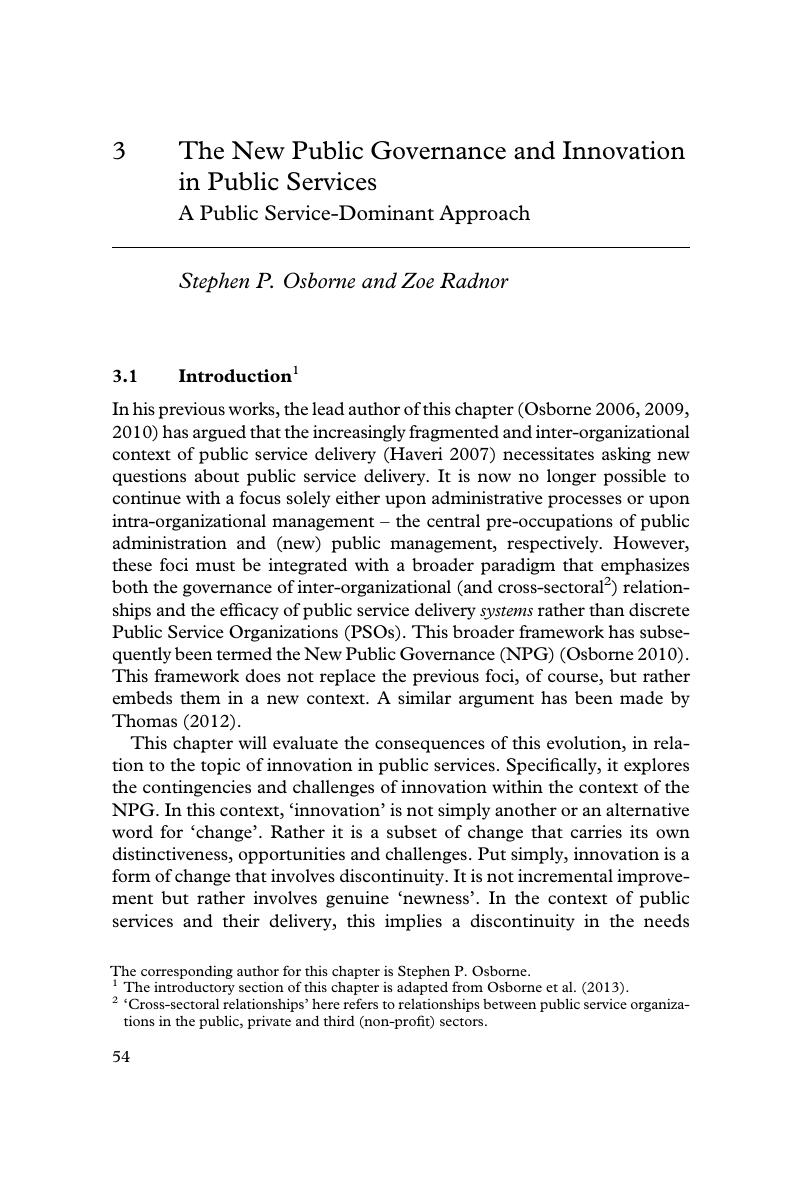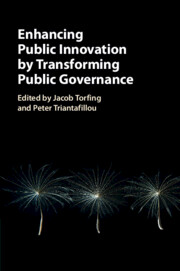Book contents
- Enhancing Public Innovation by Transforming Public Governance
- Enhancing Public Innovation by Transforming Public Governance
- Copyright page
- Contents
- Figures
- Tables
- Contributors
- 1 Enhancing Public Innovation by Transforming Public Governance?
- Part I Linking Governance and Innovation
- 2 Collaborative Governance as Creative Problem-Solving
- 3 The New Public Governance and Innovation in Public Services
- 4 Public Innovations around the World
- 5 Organizational and Governance Aspects of Diffusing Public Innovation
- Part II Changing Roles of Public and Private Actors
- Part III Transforming Governance to Enhance Innovation
- Index
- References
3 - The New Public Governance and Innovation in Public Services
A Public Service-Dominant Approach
from Part I - Linking Governance and Innovation
Published online by Cambridge University Press: 05 August 2016
- Enhancing Public Innovation by Transforming Public Governance
- Enhancing Public Innovation by Transforming Public Governance
- Copyright page
- Contents
- Figures
- Tables
- Contributors
- 1 Enhancing Public Innovation by Transforming Public Governance?
- Part I Linking Governance and Innovation
- 2 Collaborative Governance as Creative Problem-Solving
- 3 The New Public Governance and Innovation in Public Services
- 4 Public Innovations around the World
- 5 Organizational and Governance Aspects of Diffusing Public Innovation
- Part II Changing Roles of Public and Private Actors
- Part III Transforming Governance to Enhance Innovation
- Index
- References
Summary

- Type
- Chapter
- Information
- Publisher: Cambridge University PressPrint publication year: 2016
References
- 7
- Cited by

